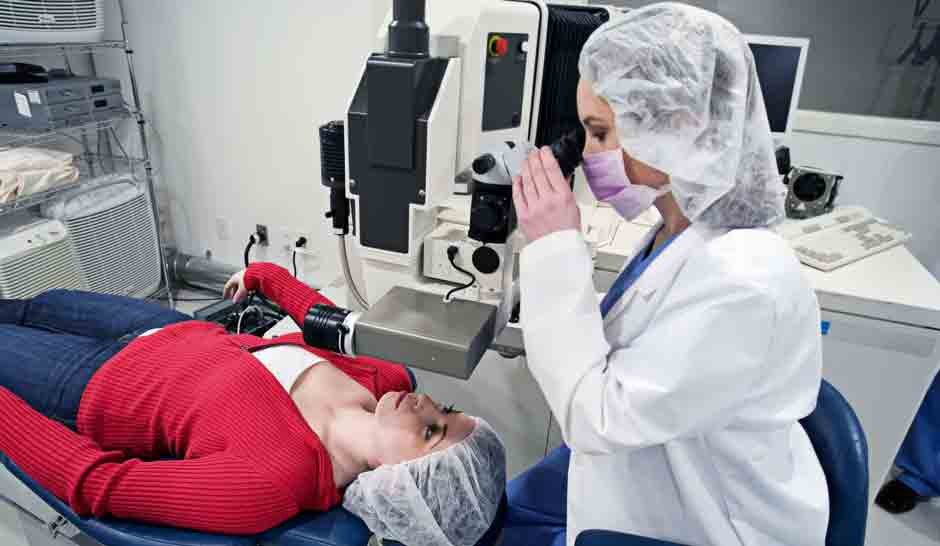The Skinny on Cryolipolysis: Potential Side Effects and Complications of Fat Freezing Treatment

Cryolipolysis is a non-invasive fat reduction treatment that has gained popularity in recent years. It works by freezing fat cells, causing them to die and be eliminated from the body. Unlike liposuction, which involves surgery and recovery time, cryolipolysis requires no incisions or anesthesia, making it a convenient option for those looking to reduce unwanted fat. However, as with any medical treatment, there are potential side effects and complications that patients should be aware of. In this article, we will explore the potential side effects and complications of cryolipolysis.
What is Cryolipolysis?
Cryolipolysis, also known as fat freezing or cool sculpting, is a non-invasive fat reduction treatment that uses cold temperatures to freeze and destroy fat cells. The process involves placing a device on the targeted area of the body, which applies controlled cooling to freeze the fat cells. Over time, the body naturally eliminates the dead fat cells, resulting in a reduction of fat in the treated area.
Potential Side Effects of Cryolipolysis
While cryolipolysis is generally considered safe and well-tolerated, there are potential side effects that patients should be aware of. The most common side effects include pain, swelling, bruising, redness, and numbness in the treated area. These side effects are usually mild to moderate and resolve on their own within a few weeks after treatment.
Pain is one of the most common side effects of cryolipolysis. Patients may experience a dull ache, tingling, or stinging sensation in the treated area during or after treatment. This pain typically resolves within a few days to a week, but in some cases, it may persist for several weeks.
Swelling, bruising, and redness are also common side effects of cryolipolysis. The treated area may appear swollen or bruised, and the skin may be red or inflamed. These side effects usually resolve within a few weeks but can be uncomfortable and unsightly in the meantime.
Numbness is another potential side effect of cryolipolysis. Patients may experience temporary numbness in the treated area, which can last for several weeks. While numbness is not typically painful, it can be a strange and uncomfortable sensation.
Complications of Cryolipolysis
While rare, there are potential complications of cryolipolysis that patients should be aware of. These include paradoxical adipose hyperplasia, scarring, and skin ulceration.
Paradoxical adipose hyperplasia is a rare complication that can occur after cryolipolysis. It is a condition in which the treated area becomes enlarged instead of reduced. While the exact cause of this condition is unknown, it is thought to be related to an inflammatory response to the freezing temperatures. Paradoxical adipose hyperplasia is more common in men than women and typically occurs several months after treatment. Treatment for this condition may involve surgery or liposuction to remove the excess fat.
Scarring is another potential complication of cryolipolysis. While rare, some patients may develop scars in the treated area. This can occur if the skin is damaged during the treatment process, or if the patient has a tendency to scar easily. Scarring can be unsightly and may require additional treatment to improve the appearance of the skin.
Skin ulceration is a rare but serious complication of cryolipolysis. It occurs when the freezing temperatures damage the skin, leading to the formation of a painful ulcer. Skin ulceration is more likely to occur in patients with thinner skin or underlying medical conditions that affect the skin’s integrity, such as eczema or psoriasis. Treatment for skin ulceration may involve antibiotics, wound care, and possible surgery to repair the damaged skin.
Factors that Affect Side Effects and Complications
Several factors can affect the likelihood and severity of side effects and complications of cryolipolysis. One of the most important factors is the type of cryolipolysis machine used. Different machines may use different cooling temperatures and applicators, which can affect the treatment’s effectiveness and the risk of side effects and complications.
The skill and experience of the practitioner performing the cryolipolysis treatment are also crucial factors. A qualified and experienced practitioner will know how to properly assess the patient’s skin and body type, as well as adjust the treatment settings to minimize the risk of side effects and complications.
Lastly, patients’ medical history and skin type can also affect the risk of side effects and complications. Patients with underlying medical conditions or taking certain medications may be at a higher risk of experiencing side effects or complications. Patients with thinner or more sensitive skin may also be more susceptible to skin damage or scarring.
How to Reduce the Risk of Side Effects and Complications
There are several things patients can do to reduce the risk of side effects and complications of cryolipolysis. One of the most important is to choose a qualified and experienced practitioner. Patients should do their research and choose a practitioner who has a good reputation and a track record of successful treatments.
Patients should also be honest with their practitioner about their medical history, medications, and any underlying health conditions. This information can help the practitioner adjust the treatment settings and minimize the risk of side effects and complications.
Following post-treatment instructions is also crucial to reducing the risk of side effects and complications. Patients should avoid strenuous exercise, sun exposure, and alcohol consumption for several days after treatment. They should also follow any instructions for applying ice or using compression garments to reduce swelling and discomfort.
Conclusion
Cryolipolysis is a popular non-invasive fat reduction treatment that has been shown to be safe and effective for many patients. However, as with any medical treatment, there are potential side effects and complications that patients should be aware of. By understanding these risks and taking steps to minimize them, patients can make informed decisions about whether cryolipolysis is right for them. Patients should also be sure to choose a qualified and experienced practitioner and follow post-treatment instructions to minimize the risk of side effects and complications.



